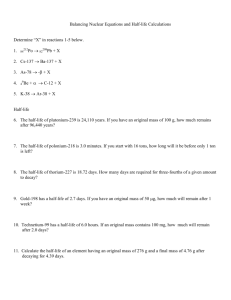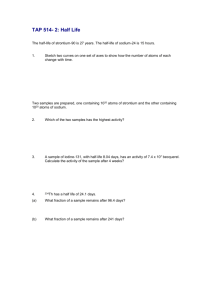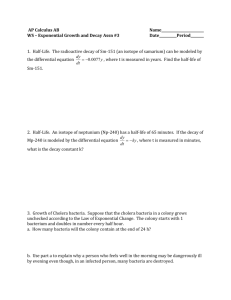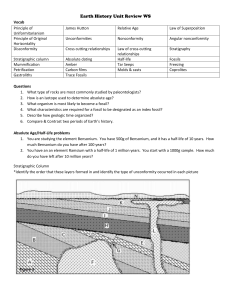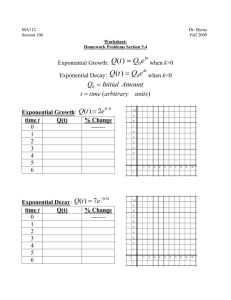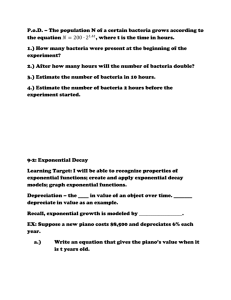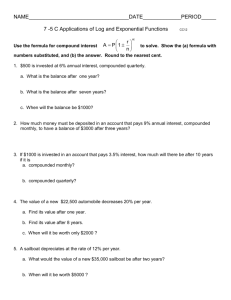Doubling-Time & Half-Life
advertisement
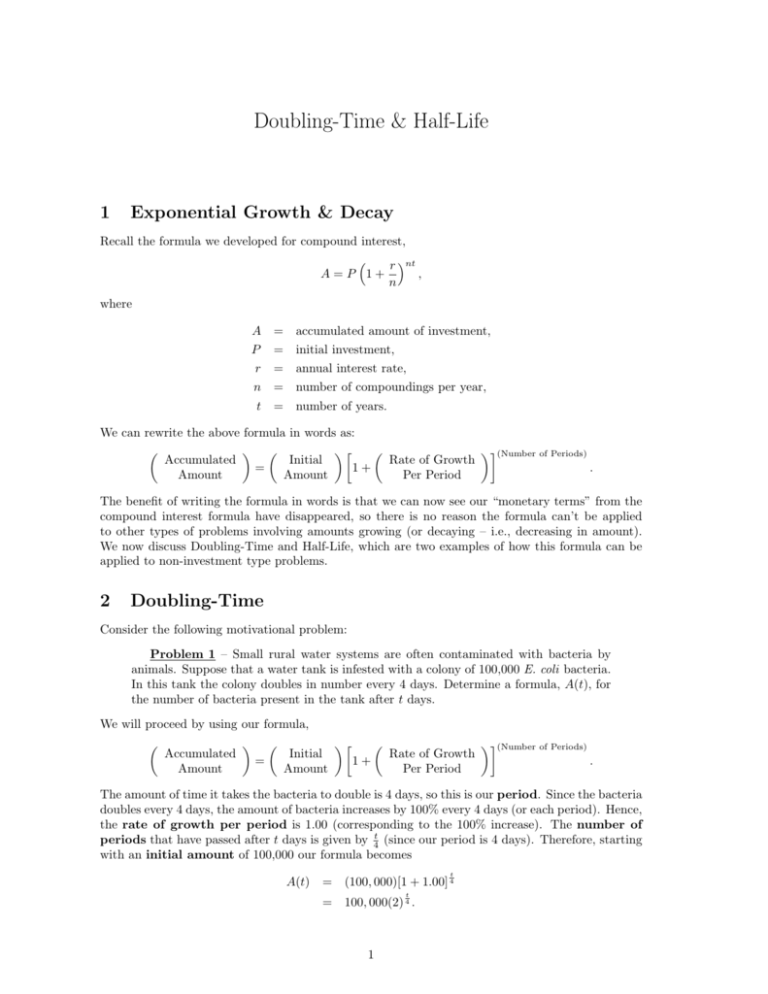
Doubling-Time & Half-Life 1 Exponential Growth & Decay Recall the formula we developed for compound interest, r nt A=P 1+ , n where A = accumulated amount of investment, P = initial investment, r = annual interest rate, n = number of compoundings per year, t = number of years. We can rewrite the above formula in words as: (Number of Periods) Accumulated Initial Rate of Growth = 1+ . Amount Amount Per Period The benefit of writing the formula in words is that we can now see our “monetary terms” from the compound interest formula have disappeared, so there is no reason the formula can’t be applied to other types of problems involving amounts growing (or decaying – i.e., decreasing in amount). We now discuss Doubling-Time and Half-Life, which are two examples of how this formula can be applied to non-investment type problems. 2 Doubling-Time Consider the following motivational problem: Problem 1 – Small rural water systems are often contaminated with bacteria by animals. Suppose that a water tank is infested with a colony of 100,000 E. coli bacteria. In this tank the colony doubles in number every 4 days. Determine a formula, A(t), for the number of bacteria present in the tank after t days. We will proceed by using our formula, Accumulated Amount = Initial Amount (Number of Periods) Rate of Growth 1+ . Per Period The amount of time it takes the bacteria to double is 4 days, so this is our period. Since the bacteria doubles every 4 days, the amount of bacteria increases by 100% every 4 days (or each period). Hence, the rate of growth per period is 1.00 (corresponding to the 100% increase). The number of periods that have passed after t days is given by 4t (since our period is 4 days). Therefore, starting with an initial amount of 100,000 our formula becomes A(t) t = (100, 000)[1 + 1.00] 4 = 100, 000(2) 4 . t 1 We can generalize the ideas we used above to formulate the following, Doubling-Time Formula – If d is the doubling-time of a quantity (the amount of time it takes a quantity to double in size) and P is the initial amount of the quantity, then the amount of the quantity present after t units of time is given by t A(t) = P (2) d , noting that our period is d units of time, so the growth rate per period is 100% and the number of periods at time t is dt . 3 Half-Life Similar to Doubling-Time is the idea of Half-Life, the amount of time it takes a quantity to decrease by half. Again, we consider the following motivational problem: Problem 2 – Lead-209, a radioactive isotope, decays to nonradioactive lead over time. The half-life of lead-209 is 3.3 hours. Suppose that 20 milligrams of lead-209 are created by a particle physics experiment. Determine a formula, A(t), for the amount of lead-209 present t hours after the experiment. We will once again be using our general formula, Accumulated Amount = Initial Amount (Number of Periods) Rate of Growth 1+ . Per Period The amount of time it takes the lead-209 to lose half its radioactive material is 3.3 hours, so this is our period. Each period the quantity is reduced by half, with implies the quantity grows by -50%. Hence, the rate of growth per period is -0.50 (or equivalently, − 21 ). The number of periods t that have passed after t hours is given by 3.3 , so if we start with an initial amount of 20 milligrams our formula becomes t 3.3 1 A(t) = (20) 1 + − 2 t 3.3 1 = 20 . 2 Generalizing this problem we obtain, Half-Life Formula – If h is the half-life of a given quantity (the amount of time it takes a quantity to halve) and P is the initial amount of the quantity, then the amount of the quantity present after t units of time is given by ht 1 A(t) = P , 2 noting that our period is h units of time, so the growth rate per period is −50% and the number of periods at time t is ht . 2

